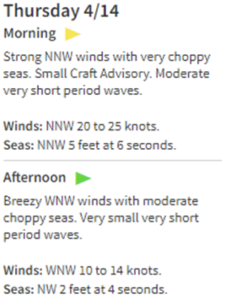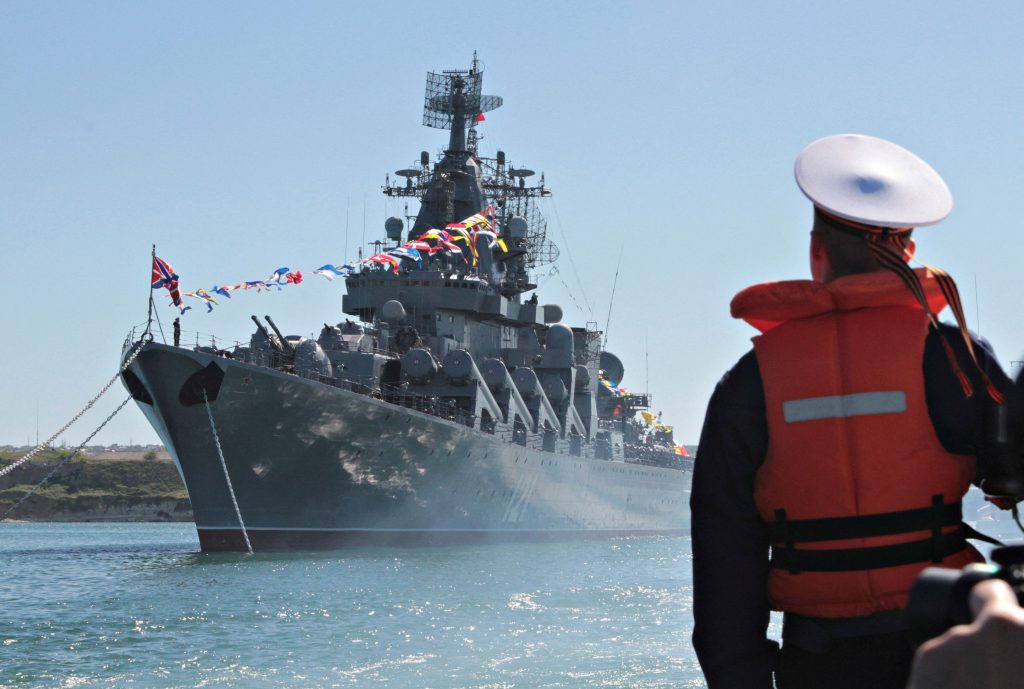Security
Russia denies missile cruiser Moskva’s sinking was because of Ukrainian attack
Tracking narratives
Russian state media suggests Ukraine is using drones to spray poisonous chemicals
Media policy
Russia denies missile cruiser Moskva’s sinking was because of Ukrainian attack
On the night of April 13, multiple Ukrainian officials announced that Neptune missiles had struck Russia’s Moskva warship anchored off the coast of Odesa. Reports soon emerged of fires and severe damage on the ship.
Within a few hours of Ukraine’s announcement, Russian media published their own version of events, provided by the Ministry of Defense, claiming that a fire on board had caused ammunition to detonate. The ministry said the ship was damaged, and the crew evacuated.
In the hours after the announcement, when it was still unclear what had happened, speculation and misinformation began to appear online, including videos that purportedly showed an explosion on the Moskva. One video, in particular, was shared hundreds of times on Twitter; the footage was from a 2013 Norwegian missile test. At the time of writing, there were no confirmed videos depicting the incident.
On April 14, the Pentagon confirmed that the ship sustained significant damage after an explosion but could not provide definitive answers about the cause of the blast. Officials said that the ship was likely being brought to Sevastopol for repairs. They also noted that a number of Russian vessels, also located in the Black Sea, had begun moving south, away from Ukraine, after the Moskva explosion.
Roman Tsymbaliuk, a journalist with the Ukrainian Independent Information Agency, reported that fourteen crewmembers from the Moskva had arrived in Sevastopol in a speedboat and were picked up by ambulances. However, this report has yet to be confirmed by other sources.
Eventually, the Russian Ministry of Defense announced that the Moskva sank due to a storm while being towed to receive repairs. They said the explosion—caused by their own ammunition—had damaged the hull, and stormy seas caused the ship to lose stability and sink. Weather on the Black Sea on April 14 appears to have been rough, with winds up to 25 knots and waves ranging between five to seven feet from midnight to noon.

The Moskva was involved in the viral “Russian warship, go fuck yourself” incident that became a symbol of Ukrainian resistance at the beginning of the war. (That incident was itself the subject of significant online noise, with initial reports indicating that the military personnel on the island had subsequently been killed by the warship. Later reports, along with statements from the Ukrainian government, indicated that the personnel were still alive.) According to Ukraine’s estimates, the sinking of the Moskva amounts to a $750 million loss for Russia.
—Ingrid Dickinson, Young Global Professional, Washington, DC
Russian state media suggests Ukraine is using drones to spray poisonous chemicals
On April 13, Russian state media outlet RT released a video suggesting that Ukraine was planning to use drones to spray toxic chemicals on Russian troops and Ukrainian civilians. In the video, a Russian soldier says drones equipped with 30-liter containers were found on an abandoned Ukrainian base. “These UAVs [unmanned aerial vehicles] could potentially be used for spraying poisonous chemicals that would be harmful to the Russian military, civilians, and farmland,” said the soldier.
The soldier claimed that the Russian forces also discovered coordinates of areas marked for spraying, which included Russian positions and residential Ukrainian neighborhoods.
The story was widely shared on Twitter by pro-Kremlin accounts, many of which were anonymous accounts with unusual Twitter handles and low numbers of followers.
On April 11, Ukrainian forces accused Russia of using poisonous substances against Ukrainian soldiers in Mariupol.
—Lukas Andriukaitis, Associate Director, Brussels, Belgium
“Security service” of Russian-occupied Luhansk claims Ukraine and foreign intelligence services are planning a “terrorist act”
In a possible false flag accusation, the “State Security Service” of the so-called “Luhansk People’s Republic” (“LNR”) issued a statement claiming, without evidence, that the special services of Ukraine are recruiting public participation in a political rally in the center of the region’s capital city, Luhansk, which it would then supposedly attack as a “terrorist act.”
The statement alleges that the central government of Ukraine is conducting information and psychological operations on social networks in accordance with “instructions received from foreign intelligence services.” The statement additionally claimed that users on messenger apps are being contacted en masse by cell numbers of Ukraine’s “federal operator Vodafon Ukraine” – Vodafon Ukraine is a privately held company – with “provocative texts” calling on the recipients to join an “unsanctioned rally” on April 16 at Luhansk’s Theater Square. “We also received information regarding the intention of foreign intelligence services to carry out a terrorist act at the time of the alleged mass gathering in the center of the capital of the Luhansk People’s Republic,” the statement continued.
—Eto Buziashvili, Research Associate, Washington DC
TikTok inconsistently implemented upload ban in Russia, allowing pro-war content to proliferate, report finds
On April 13, European nonprofit organization Tracking Exposed published a report that found that TikTok has inconsistently implemented its ban on users in Russia uploading content.
The report suggested that, despite TikTok announcing on March 6 that it would suspend livestreams and new uploads from Russia, the platform’s ban contained a loophole that allowed a coordinated network of accounts to continue posting new content promoting pro-war narratives. The loophole was reportedly available between March 6 to 23.
“One loophole allowed you to post content from a web browser, switching a VPN back and forth,” said the report. During this period, the number of pro-war hashtags posted from Russia increased significantly. “During the 17-day period that TikTok didn’t comprehensively implement the ban, new content uploads related to the war were overwhelmingly pro-war,” said the Tracking Exposed report.
In addition, TikTok removed the restriction on new uploads from March 23 to 25, allowing any user in Russia to upload new content. The report found that TikTok began implementing the ban again on March 26. The report’s authors believe that TikTok’s inconsistent implementation of the ban was most likely associated with a technical glitch rather than the deliberate creation of a backdoor.
The report also suggested that anti-war activists may not have known of the loophole in TikTok’s ban as significantly less anti-war content was uploaded while the bans were in effect. “Before the ban was announced, the balance of pro-war and anti-war content was roughly equal. After, 93.5 percent of war-related content was pro-war, while only 6.5 percent was anti-war.”
On April 12, TikTok released a statement that, between February 24 and March 31, the company had removed more than 320,000 fake accounts in Russia and 46,000 fake accounts in Ukraine, resulting in the removal of at least 343,000 videos. TikTok has not addressed the inconsistent implementation of its upload ban.
—Givi Gigitashvili, DFRLab Research Associate, Warsaw, Poland
Image: FILE PHOTO: A sailor looks at the Russian missile cruiser Moskva moored in the Ukrainian Black Sea port of Sevastopol, Ukraine 10, 2013. REUTERS/Stringer/File Photo
